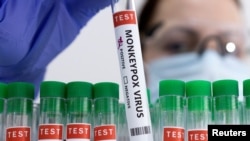A surge in monkeypox infections has been reported since early May outside the West and Central African countries where the disease has long been endemic.
From January 1 to July 4, 6,027 laboratory-confirmed cases of monkeypox and three deaths have been reported to the World Health Organization from 59 countries.
Some 82 percent of the cases are in Europe and 15 percent are in the Americas.
The countries with more than 1,000 confirmed cases are Britain (1,351), Spain (1,256) and Germany (1,242), according to the European Centre for Disease Prevention and Control, and WHO Europe.
Outside Europe, the WHO report counted 460 confirmed cases in the United States and 300 in Canada.
Case numbers have gone up by 77 percent since June 27, in which time two new deaths -- both in the Central African Republic -- have been reported.
According to available statistics, almost all patients affected thus far are male, with a median age of 37, with three-fifths identifying as men who have sex with men, the WHO said.
Among cases with reported sexual orientation, 60 percent (1,214 out of 2,025) identified as gay, bisexual and other men who have sex with men; and 41 percent (335 out of 827) of cases with known HIV status were positive for HIV," the report said.
Among the cases who reported at least one symptom, 81 percent presented with a widespread rash on the body, 50 percent presented with fever and 41 percent presented with genital rash.
Testing data indicate that the monkeypox virus genomes belong to the West African type, which is milder than the other Congo Basin group.
Meanwhile, the WHO reported that 10 countries have not reported new cases for more than 21 days -- the disease's maximum incubation period.







